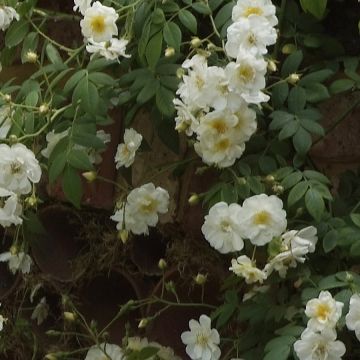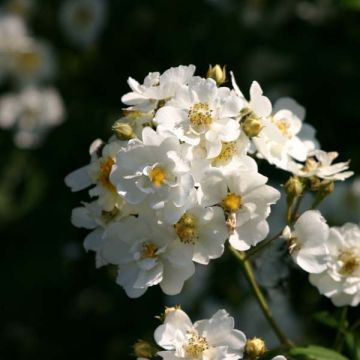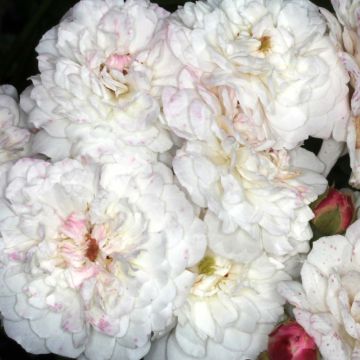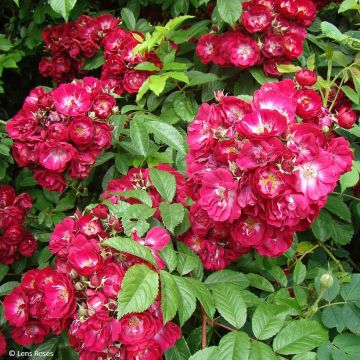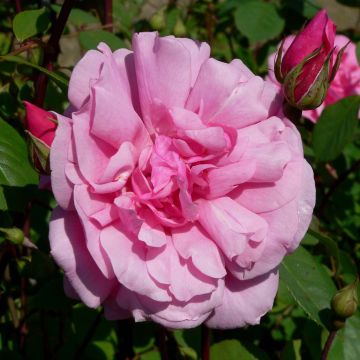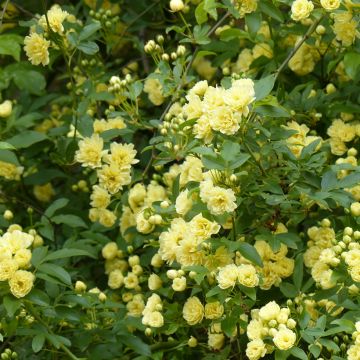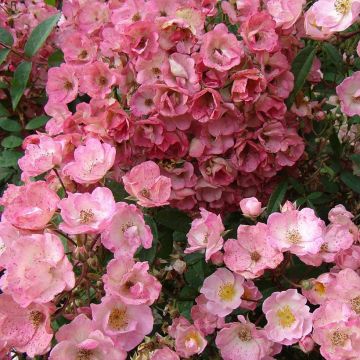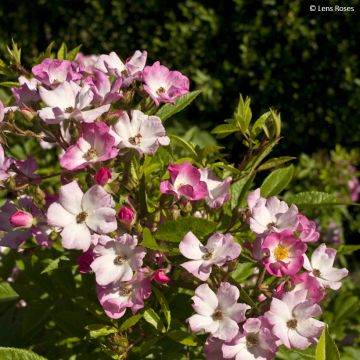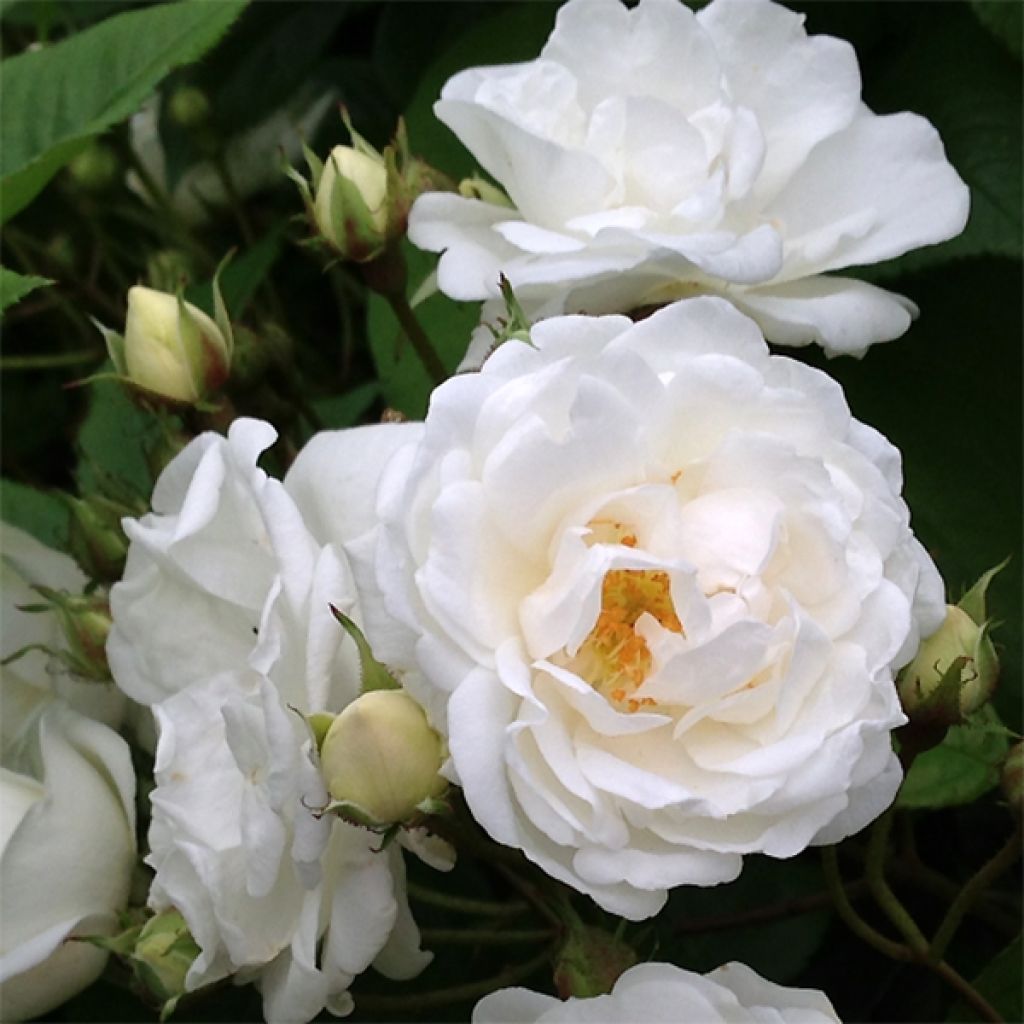

Rosier liane banksiae Purezza


Rosier liane banksiae Purezza
Rosa banksiae Purezza (The Pearl)
Rosa banksiae Purezza (= The Pearl)
Lady Banks' Rose
Fantastic, I planted it in May thinking it wouldn't survive the summer. Well, it's growing like a young plant. I can't wait to have flowers next spring.
Pat, 13/11/2024
Why not try an alternative variety in stock?
View all →This plant carries a 6 months recovery warranty
More information
We guarantee the quality of our plants for a full growing cycle, and will replace at our expense any plant that fails to recover under normal climatic and planting conditions.
From €5.90 for pickup delivery and €6.90 for home delivery
Express home delivery from €8.90.
Delivery to Corse prohibited: UE law prohibits the import of this plant from mainland France to Corse as part of the fight against Xylella fastidiosa. Please accept our sincere apologies.
More information

Does this plant fit my garden?
Set up your Plantfit profile →
Description
The climbing rose Purezza (synonym The Pearl) is a wonderful modern hybrid of the Banksia rose that has retained the charm and robustness of its Chinese ancestor while offering better cold resistance, less exuberant growth, and repeat flowering. It blooms early and abundantly, first from March to May depending on the climate, covering its foliage with barely double and fragrant white flowers in clusters. Its long flexible stems are almost devoid of prickles and its foliage is generally very healthy and persists through winter. Cultivable in most of our regions, this marvel deserves to be discovered.
The Rosa x banksia Purezza was obtained in Italy by Quinto Mansuino in 1961. It is the result of a cross between the miniature rose 'Tom Thumb' which gave it its repeat flowering character and hardiness, and Rosa banksiae lutescens, a single yellow-flowered rose discovered in China in 1870. From this second parent, Purezza inherited most of the characteristics concerning the appearance of its foliage and the overall look of its flowers.
The growth of this climbing rose Purezza is rapid. A 10-year-old plant sends its stems up to 5 or 6 m (16 or 20ft) in height, with the base easily occupying 2 to 3 m on the ground. The young, very flexible stems, spring green in colour, are generally without thorns, which makes any pruning or shaping easier. It is the 1-year-old branches that produce countless clusters of 4 to 15 modest-sized flowers (3 to 4 cm (1 to 2in)), white and softly scented. This flowering is sporadic throughout the summer if the soil remains moist. In very dry summers, the flowering diminishes, but there is a beautiful resurgence in October. The foliage often persists through winter. It is divided into narrow and short leaflets, characterised by a tough texture and a bright green colour, becoming dark green in summer. It is sometimes susceptible to mildew when conditions are very hot and dry, but the plant, with its robust health, generally gets rid of this disease naturally. The long flexible stems should be tied to a support sheltered from cold winds. The smooth bark gradually transforms on the trunk of an older plant into rough strips revealing orange-ochre undersides.
The climbing rose Purezza will delight enthusiasts of the Banksia rose, including those who garden in regions with fairly cold winters : unlike its cousin Rosa banksiae Alba Plena which it resembles, this one thrives in cooler areas. This wonderful climber loves to invade small trees and to creep into hedges, where it will express its true nature of a rambling plant. Its foliage elegantly dresses a fence or wall, even when not in flower, throughout the year. It provides perfect shade on a large south-facing arbor. Easy to maintain, resistant to diseases, the plant requires no watering once well established and no treatment. Purezza will need good sunlight to induce its fabulous flowering. To accompany it, consider other climbing roses, a summer-flowering clematis or a compact wisteria Cecilia, for example.
Report an error about the product description
Rosa banksiae Purezza (The Pearl) in pictures


Plant habit
Flowering
Foliage
Botanical data
Rosa
banksiae
Purezza (= The Pearl)
Rosaceae
Lady Banks' Rose
Cultivar or hybrid
Other Rambling Roses
Planting and care
The Purezza rose is an easy-to-grow plant in most of our regions, except for the coldest ones in winter. It should be planted in a very sunny location, sheltered from cold winds. It is undemanding on the nature of the soil, as long as it is deep enough to accommodate its root system, which will seek moisture very low, even in very dry summers. It tolerates the presence of limestone in the soil and prefers fertile, even clayey, but properly drained soils. This rose will benefit from maintenance pruning from January to March, outside the frost period. It may be useful to rejuvenate the plant by removing some older branches.
The Purezza rose requires a lot of sun to create its magnificent flowering. The foliage is sometimes (rarely in Purezza) marked with white, a sign of mildew. This disease will affect the plant in hot and dry situations, without creating any real damage; it generally disappears quite quickly when the conditions become more acceptable. One last point: ants love to wander on the young stems, without any consequence for the plant's health!
Roses are often stained or ugly at the end of summer, but it is not a problem for their development. These stains are not dangerous for the rose, it is a natural phenomenon.
Planting period
Intended location
Care
-
, onOrder confirmed
Reply from on Promesse de fleurs
Traditional Roses
Haven't found what you were looking for?
Hardiness is the lowest winter temperature a plant can endure without suffering serious damage or even dying. However, hardiness is affected by location (a sheltered area, such as a patio), protection (winter cover) and soil type (hardiness is improved by well-drained soil).

Photo Sharing Terms & Conditions
In order to encourage gardeners to interact and share their experiences, Promesse de fleurs offers various media enabling content to be uploaded onto its Site - in particular via the ‘Photo sharing’ module.
The User agrees to refrain from:
- Posting any content that is illegal, prejudicial, insulting, racist, inciteful to hatred, revisionist, contrary to public decency, that infringes on privacy or on the privacy rights of third parties, in particular the publicity rights of persons and goods, intellectual property rights, or the right to privacy.
- Submitting content on behalf of a third party;
- Impersonate the identity of a third party and/or publish any personal information about a third party;
In general, the User undertakes to refrain from any unethical behaviour.
All Content (in particular text, comments, files, images, photos, videos, creative works, etc.), which may be subject to property or intellectual property rights, image or other private rights, shall remain the property of the User, subject to the limited rights granted by the terms of the licence granted by Promesse de fleurs as stated below. Users are at liberty to publish or not to publish such Content on the Site, notably via the ‘Photo Sharing’ facility, and accept that this Content shall be made public and freely accessible, notably on the Internet.
Users further acknowledge, undertake to have ,and guarantee that they hold all necessary rights and permissions to publish such material on the Site, in particular with regard to the legislation in force pertaining to any privacy, property, intellectual property, image, or contractual rights, or rights of any other nature. By publishing such Content on the Site, Users acknowledge accepting full liability as publishers of the Content within the meaning of the law, and grant Promesse de fleurs, free of charge, an inclusive, worldwide licence for the said Content for the entire duration of its publication, including all reproduction, representation, up/downloading, displaying, performing, transmission, and storage rights.
Users also grant permission for their name to be linked to the Content and accept that this link may not always be made available.
By engaging in posting material, Users consent to their Content becoming automatically accessible on the Internet, in particular on other sites and/or blogs and/or web pages of the Promesse de fleurs site, including in particular social pages and the Promesse de fleurs catalogue.
Users may secure the removal of entrusted content free of charge by issuing a simple request via our contact form.
The flowering period indicated on our website applies to countries and regions located in USDA zone 8 (France, the United Kingdom, Ireland, the Netherlands, etc.)
It will vary according to where you live:
- In zones 9 to 10 (Italy, Spain, Greece, etc.), flowering will occur about 2 to 4 weeks earlier.
- In zones 6 to 7 (Germany, Poland, Slovenia, and lower mountainous regions), flowering will be delayed by 2 to 3 weeks.
- In zone 5 (Central Europe, Scandinavia), blooming will be delayed by 3 to 5 weeks.
In temperate climates, pruning of spring-flowering shrubs (forsythia, spireas, etc.) should be done just after flowering.
Pruning of summer-flowering shrubs (Indian Lilac, Perovskia, etc.) can be done in winter or spring.
In cold regions as well as with frost-sensitive plants, avoid pruning too early when severe frosts may still occur.
The planting period indicated on our website applies to countries and regions located in USDA zone 8 (France, United Kingdom, Ireland, Netherlands).
It will vary according to where you live:
- In Mediterranean zones (Marseille, Madrid, Milan, etc.), autumn and winter are the best planting periods.
- In continental zones (Strasbourg, Munich, Vienna, etc.), delay planting by 2 to 3 weeks in spring and bring it forward by 2 to 4 weeks in autumn.
- In mountainous regions (the Alps, Pyrenees, Carpathians, etc.), it is best to plant in late spring (May-June) or late summer (August-September).
The harvesting period indicated on our website applies to countries and regions in USDA zone 8 (France, England, Ireland, the Netherlands).
In colder areas (Scandinavia, Poland, Austria...) fruit and vegetable harvests are likely to be delayed by 3-4 weeks.
In warmer areas (Italy, Spain, Greece, etc.), harvesting will probably take place earlier, depending on weather conditions.
The sowing periods indicated on our website apply to countries and regions within USDA Zone 8 (France, UK, Ireland, Netherlands).
In colder areas (Scandinavia, Poland, Austria...), delay any outdoor sowing by 3-4 weeks, or sow under glass.
In warmer climes (Italy, Spain, Greece, etc.), bring outdoor sowing forward by a few weeks.






































